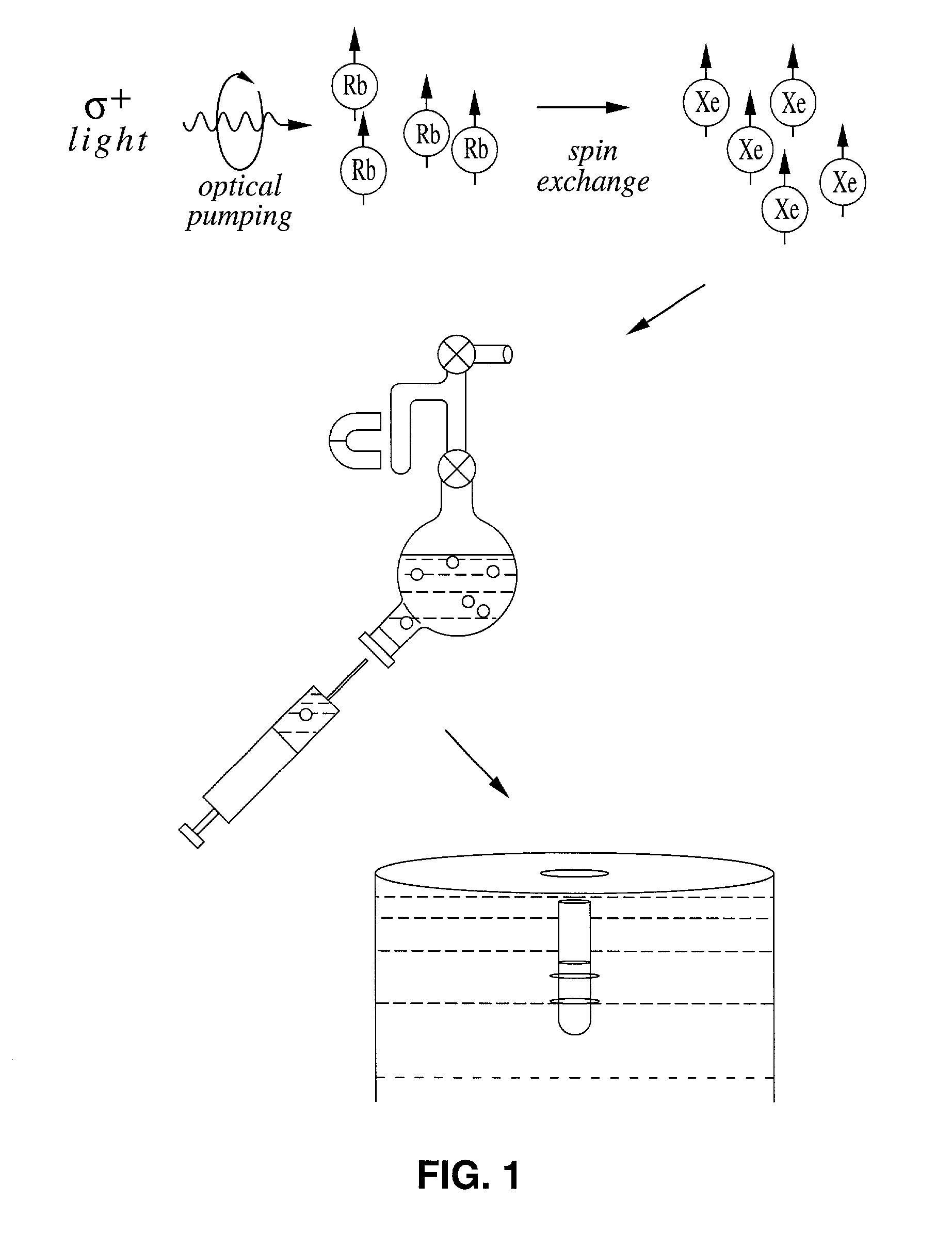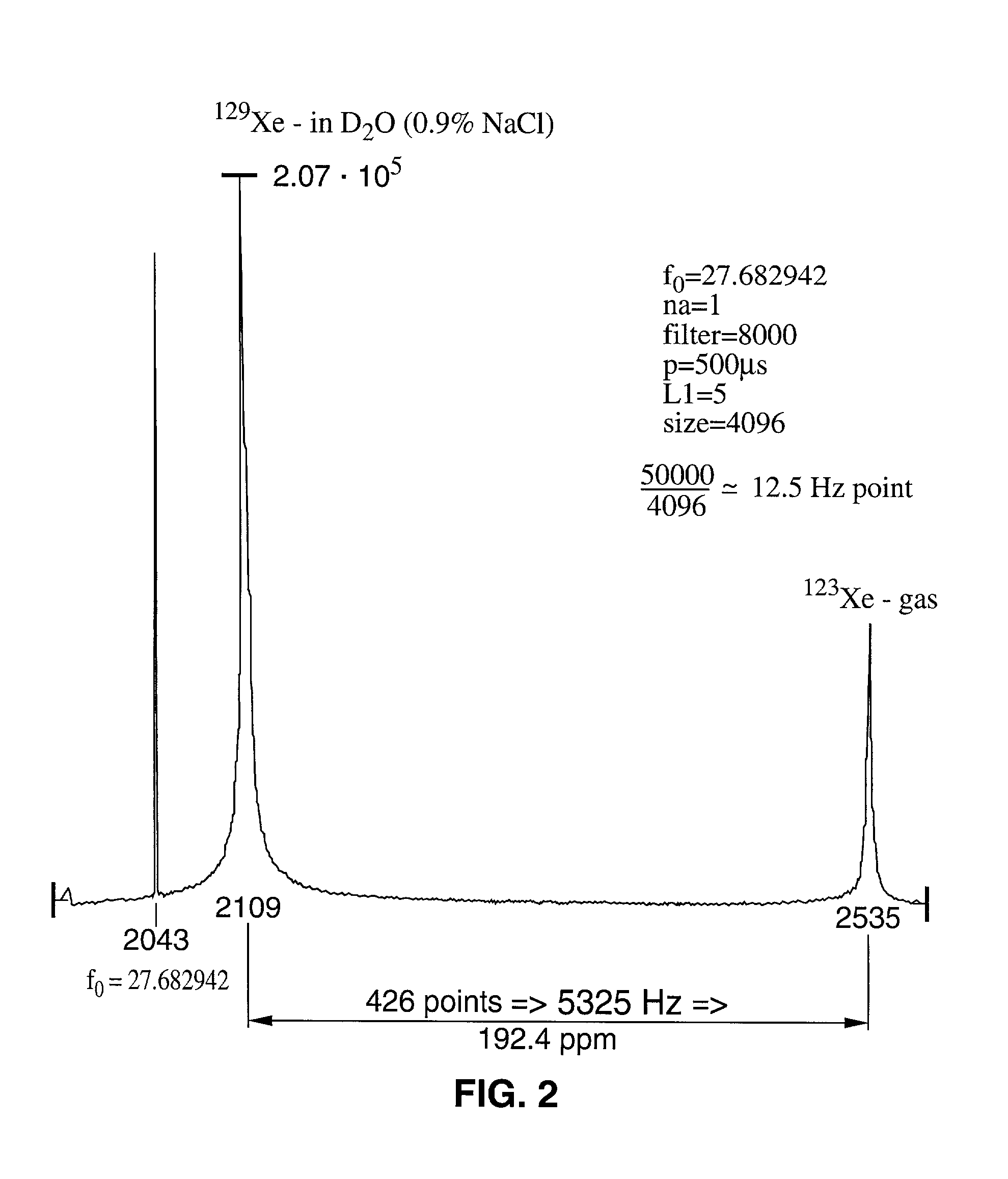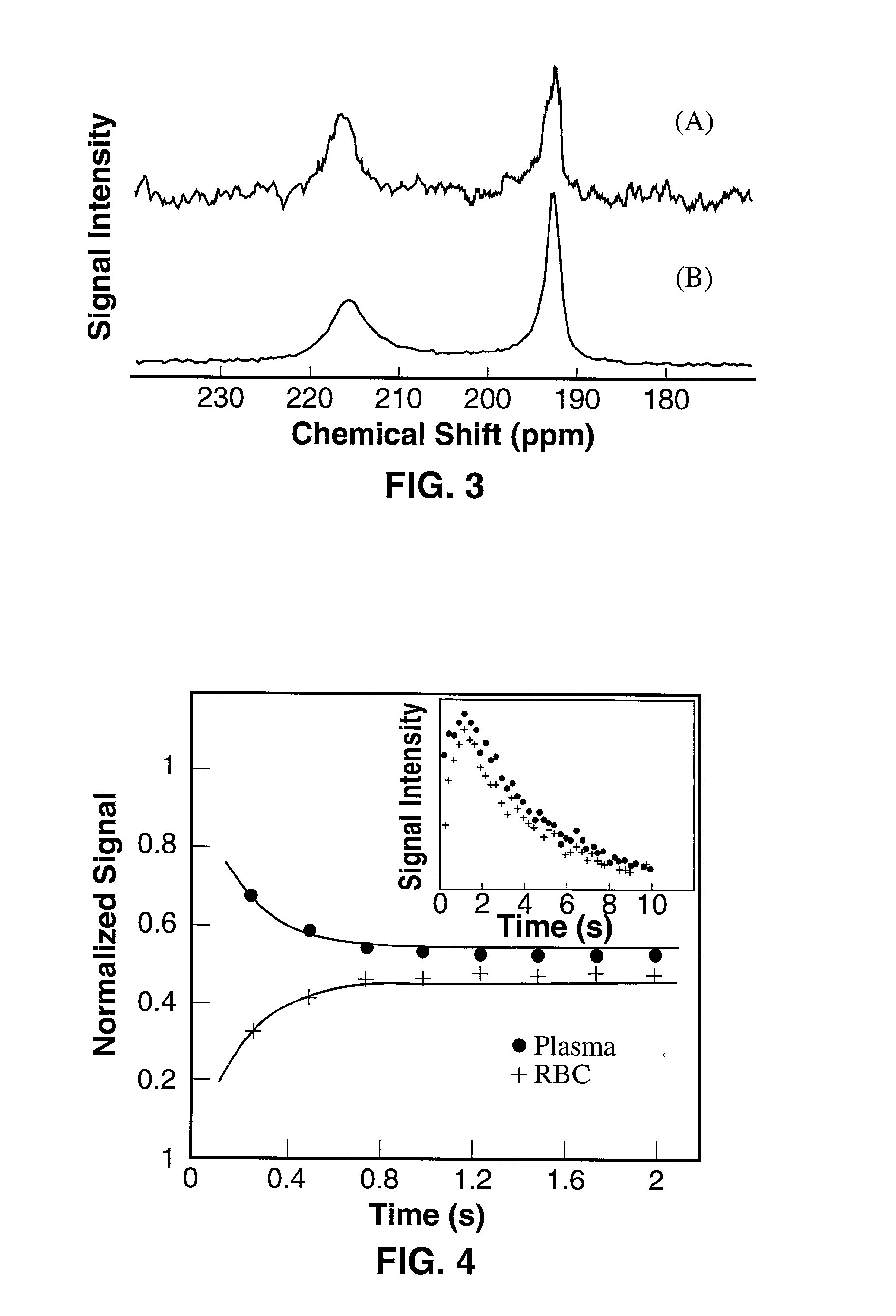Enhancement of NMR and MRI in the presence of hyperpolarized noble gases
a noble gas and nmri technology, applied in the field of hyperpolarized noble gas enhancement in the presence of noble gas, can solve the problems of low sensitivity of mri and nmr spectroscopy for these molecules, persistent challenge in sensitivity of nmr, and inability to achieve the effect of reducing the growth of proton signals
- Summary
- Abstract
- Description
- Claims
- Application Information
AI Technical Summary
Benefits of technology
Problems solved by technology
Method used
Image
Examples
example 1
[0124] This example describes the .sup.129Xe NMR of a sample of hyperpolarized .sup.129Xe dissolved in aqueous saline. The T.sub.1 of xenon was measured in both H.sub.2O saline and D.sub.2O / saline.
[0125] In an NMR tube open to the atmosphere were combined saline and hyperpolarized .sup.129Xe. The saline used had a NaCl concentration of 0.9% by weight. .sup.129Xe was dissolved in saline as described in the materials and methods section above. Xenon has a low solubility in saline, with an Ostwald coefficient of only 0.0926 (the standard temperature and pressure volume of xenon dissolved in 1 liter of liquid at 1 atmosphere of gas pressure; 1 atm=101.3 kPa). In H.sub.2O / saline, the T.sub.1 of xenon is quite long (66 s at 9.4 T). The .sup.129Xe NMR spectrum of a solution of .sup.129Xe in D.sub.2O saline is displayed in FIG. 2. In saline made with D.sub.2O, the T.sub.1 of xenon is .apprxeq.1000 s. Thus, the shorter T.sub.1 of xenon in H.sub.2O saline is due to dipolar couplings between t...
example 2
[0127] This example demonstrates the use of xenon NMR to study the partition of xenon between the intracellular and extracellular compartments in a sample of human blood. The NMR of xenon in human blood was measured using both hyperpolarized and unpolarized xenon.
[0128] 2.1 Materials and Methods
[0129] A sample of human blood was prepared by allowing fresh blood from a volunteer to settle for a few hours and subsequently decanting off a portion of the plasma. The portion removed accounted for approximately 30% of the total volume of the blood sample. Following removal of a portion of the plasma, xenon saturated saline (1 mL) was injected into the red blood cell (RBC) sample (1 mL) and the .sup.129Xe NMR was measured. The NMR spectra were measured on a Bruker AM-400 spectrometer.
[0130] 2.2 Results
[0131] The NMR spectrum of non-polarized xenon was measured in an RBC sample (FIG. 3A). Considerable signal averaging was required in order to obtain a spectrum with an acceptable signal-to-n...
example 3
[0134] Example 3 illustrates the use of NMR spectroscopy to observe the dynamics of the mixing of laser polarized .sup.129Xe between the intracellular and extracellular compartments of a sample consisting of red blood cells and plasma.
[0135] 3.1 Materials and Methods
[0136] A sample of laser polarized xenon in saline and a RBC sample were prepared as described in Examples 1 and 2, respectively. By using short rf pulses of small tipping angle, .sup.129Xe NMR spectra were acquired as a function of time after injection of the xenon / saline mixture into the blood. NMR spectra were measured on a Bruker AM-400 spectrometer.
[0137] 3.2 Results
[0138] The results of this experiment are illustrated in FIG. 4. In FIG. 4, the main figure shows the time dependence of the xenon signal in the RBC and in the saline / plasma, normalized by the total signal. The initial rise of the RBC signal and decrease in the saline / plasma signal indicates the transfer of xenon from the saline / plasma water mixture to t...
PUM
 Login to View More
Login to View More Abstract
Description
Claims
Application Information
 Login to View More
Login to View More - R&D
- Intellectual Property
- Life Sciences
- Materials
- Tech Scout
- Unparalleled Data Quality
- Higher Quality Content
- 60% Fewer Hallucinations
Browse by: Latest US Patents, China's latest patents, Technical Efficacy Thesaurus, Application Domain, Technology Topic, Popular Technical Reports.
© 2025 PatSnap. All rights reserved.Legal|Privacy policy|Modern Slavery Act Transparency Statement|Sitemap|About US| Contact US: help@patsnap.com



